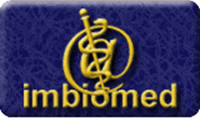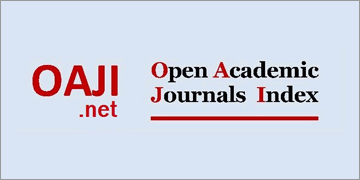EFECTO DEL DIMETILSULFÓXIDO EN UN MODELO ANIMAL DE NEFROTOXICIDAD INDUCIDA POR GENTAMICINA EN CONEJOS
Resumen
Objetivo: La utilidad clínica de la gentamicina se ve limitada por sus efectos deletéreos renales, causados principalmente por daño oxidativo. Dado que el dimetilsulfóxido posee propiedades antioxidantes, se plantea su uso como agente nefroprotector en un modelo animal. Métodos: Se distribuyeron de forma aleatoria 24 conejos en 3 grupos (A, B y C), se administró durante 5 días solución salina normal 0,9%(SSN) para el grupo A, gentamicina más SSN para el grupo B y gentamicina más dimetilsulfóxido al 25% para el grupo C. Se determinaron los parámetros: creatinina sérica, actividad enzimática (n-acetyl-b-d-glucosaminidasa urinaria) e histopatología renal. Resultados: La creatinina aumentó respecto al valor basal en los grupos B y C (p=0,009). La comparación del incremento entre grupo A vs C mostró significancia estadística (p=0,0194). La clasificación para lesión renal aguda RIFLE fue del 25% y 50% en estadío Riesgo para los grupos C y B respectivamente y 12,5% en estadío Injuria para el grupo B. La actividad de n-acetyl-b-d-glucosaminidasa urinaria presentó incrementos en todas sus mediciones (p<0,05).
La histopatología reveló necrosis mayor del 50% de los túbulos proximales en el 25% del grupo C y 87,5% del grupo B, así como necrosis total en 12,5% del grupo B. Se observaron diferencias entre el grupo A vs B (p<0,001) y C (p<0,05). Conclusiones: El modelo planteado induce nefrotoxicidad. El uso de dimetilsulfóxido no redujo el incremento en los niveles de creatinina y en actividad enzimática, mientras que la Lesión Renal Aguda (LRA) por evaluación histopatológica presentó una leve mejoría que carece de respaldo estadístico.
Palabras Clave: Dimetilsulfóxido, gentamicina, lesión renal aguda, radicales libres
Citas
Revista Científica
CIMEL
Ciencia e Investigación Médica Estudiantil Latinoamericana
Órgano Oficial de Difusión Científica de la Federación Latinoamericana de Sociedades Científicas de Estudiantes de Medicina FELSOCEM
ISSN versión electrónica: 1992 - 4240
ISSN versión impresa: 1680 - 8398
DECLARACIÓN:
- En caso que el artículo fuese aprobado para su publicación en la Revista Ciencia e Investigación Médica Estudiantil Latinoamericana (CIMEL), cedo mis derechos patrimoniales y autorizo a dicha Revista a la publicación y divulgación del documento en las condiciones, procedimientos y medios que disponga CIMEL.
- Certifico que he contribuido directamente al contenido intelectual de este manuscrito, a la génesis y análisis de sus datos, por lo cual estoy en condiciones de hacerme públicamente responsable de él y acepto que mi nombre figure en la lista de autores.
- Garantizo que el artículo es un documento original y no ha sido publicado, total ni parcialmente, en otra revista científica, salvo en forma de resumen o tesis (en cuyo caso adjunto copia del resumen o carátula de la tesis).
- En caso de que se haya sido publicado previamente, adjunto la autorización original de la Revista donde se realizó la publicación primaria, para su publicación duplicada en la Revista CIMEL.
- No recibiré regalías ni ninguna otra compensación monetaria de parte de la Revista CIMEL por la publicación del artículo.
- No he incurrido en fraude científico, plagio o vicios de autoría; en caso contrario eximo de toda responsabilidad a laRevista CIMEL; y me declaro como el único responsable.
- Me comprometo a no presentar este artículo a otra revista para su publicación, hasta recibir la decisión editorial de la Revista CIMEL sobre su publicación.
- Adjunta a mi firma, incluyo cuál fue mi participación en la elaboración del artículo que presento para publicar a la Revista CIMEL (Según tabla de códigos de participación).
|
|
Códigos de Participación: (Anote estos códigos en la parte correspondiente a su nombre, de acuerdo a su participación dentro del trabajo enviado). |






.png)





 Todo el contenido de esta revista, está bajo
Todo el contenido de esta revista, está bajo  Facebook
Facebook